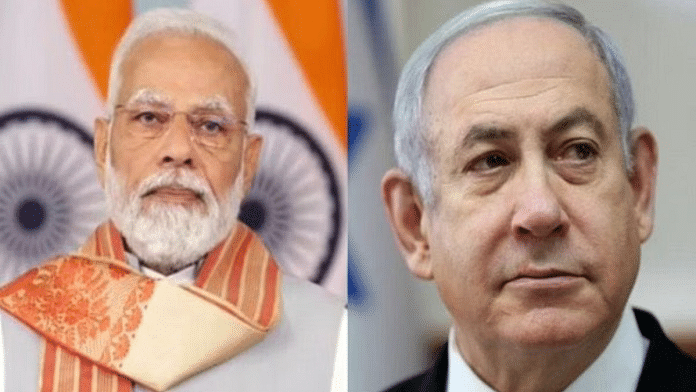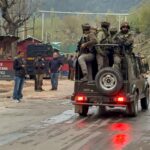First, the attack was designed to embarrass the Indian government at a time when Delhi’s global profile shines brightly.
Second, the perpetrators seek to reverse tangible economic and social gains that followed from Delhi’s decision to fully integrate Kashmir with the Indian state in August 2019 by revoking the region’s autonomous status.
Once in a while, history is coaxed to rhyme in macabre ways.
Third – and as a corollary to the above two – the attack was fashioned to provoke a strong, possibly military, reaction from Prime Minister Narendra Modi’s government. Such a reaction would mire India in yet another conflict with Pakistan and reinstate, in a manner of speaking, Kashmir in global conversations about India.
The attack also comes at a time when the US Vice President JD Vance and his family are vacationing in India. Modi is among a handful of world leaders – along with Israel’s Benjamin Netanyahu – who enjoys a warm relationship with Donald Trump and key members of his team. The bonhomie was on full display when Vance and his family at his residence the day before the attack. The normally combative Vance – whose spouse is of Indian origin – also effusively praised India and Modi . The 22 April attack is bound to eclipse the symbolic import of the Vance trip.
Once in a while, history is coaxed to rhyme in macabre ways. As Indian analysts , 25 years ago, the day before then US President Bill Clinton and his daughter arrived in India on a trip that resembles the Vances’, terrorists executed 36 Sikh villagers not far from Pahalgam. Clinton’s visit was designed to consolidate the first major uptick in India-US relations in decades. It also marked the beginning of the “” of India and Pakistan in Western capitals, .
At the time of the Pahalgam attack, Modi was in Saudi Arabia on a two-day visit. (He has since cut his trip short and returned to Delhi.) India’s deepening relationships with the wealthy West Asian sheikhdoms – which have historically sided with Pakistan – remain the single-greatest achievement of the country’s contemporary diplomacy. The gains from these relationships have been tangible. India is now a significant actor in the Middle East, on the US- and Israel-backed India-Middle East-Europe Economic Corridor being a case in point.
During the 2019 India-Pakistan military conflagration following a major terrorist attack in Kashmir – comparable in gravity to the 22 April attack – the Arab states in securing the release of an Indian air force pilot captured by Pakistan. At the same time, has significantly weakened. Religious considerations aside, the Kashmir conflict simply does not resonate with Mohammad bin Salman’s Riyadh which considers it a purely . The extent to which the Gulf states have pushed aside Kashmir as a variable in their strategic calculus vis-a-vis India became clear with their to the August 2019 decision of the Modi government to revoke Jammu and Kashmir’s autonomous status.
At the time, many feared that the move could vastly inflame the festering insurgency in Kashmir, a situation that did not come to pass. The reasons for this were three-fold and intertwined. The Indian government’s severe security crackdown from August 2019 merged into pandemic curbs the following year. By the time the pandemic had ended, the Modi government’s position on Kashmir had .
Jammu and Kashmir saw local elections last year after a decade. Meanwhile the indigenous insurgency there has lost steam while the local economy continues to record gains. In fact, per capita income in Jammu and Kashmir since 2019 has than many other north Indian states, Delhi and Punjab included. Tourists have to Kashmir over the past couple of years. As Kashmir slowly but surely became quiescent, many Indians – after several generations – once again came to see it as a major tourist destination. The political impact of this psychological shift cannot be overstated.
The Pahalgam attack stands to Kashmir’s nascent normalcy. Equally, it presents a veritable dilemma for the Modi government.
Modi knows that not responding to the attack will embolden a newly-resurgent parliamentary opposition, which has to portray the development as a failure of his Kashmir policy. But more importantly, he knows – especially given the pan-India casualties of the attack – that anything short of a visibly strong reaction will fail to assuage the Indian public. At the same time, if Delhi does opt for a muscular response, it risks inadvertently raising the international profile of the Kashmir dispute, something the Modi government has desperately sought to avoid over the past decade.
In this, Modi’s choice may be akin to Hobson’s, much like Netanyahu’s following the October 2023 Hamas attack. Just where that leads Kashmir – and the region at large – will unfold in the coming weeks.
This article first appeared in , published by the Lowy Institute.








